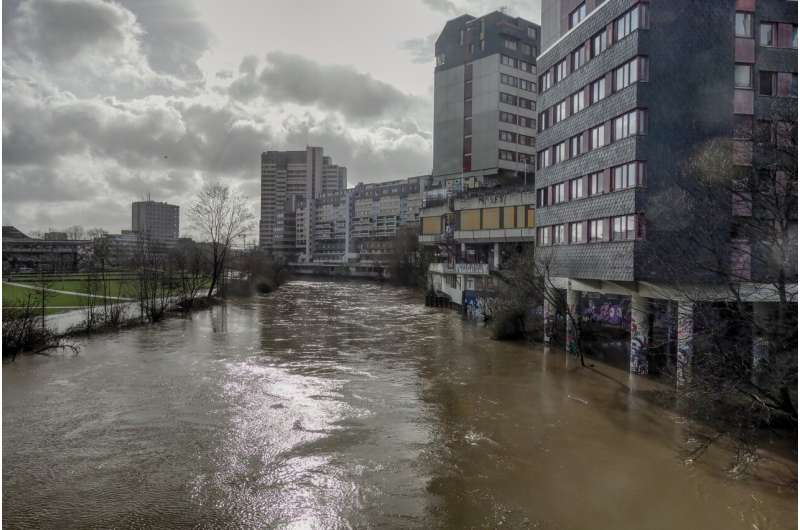This article has been reviewed according to Science X's editorial process and policies. Editors have highlighted the following attributes while ensuring the content's credibility:
fact-checked
peer-reviewed publication
trusted source
proofread
Experts create blueprint to aid elderly people at storm flood risk

Emergency planners in Shanghai and New York City face increasing pressure to protect elderly citizens from the devastating impact of coastal flooding caused by storms and cyclones, a new study reveals.
Both cities are highly exposed to storm-induced flooding and analysis shows that—with two distinct systems of emergency operation—there are significant differences between them in evacuating elderly people to safety.
After studying emergency operations in the cities, experts devised a blueprint for efficient evacuation that could be used in similar flood-threatened cities around the globe such as Mumbai, Bangkok, Jakarta, Ho Chi Minh City, Miami, and Tokyo.
An international group of researchers, including experts from the University of Birmingham, today published its findings in Nature Water. They recommend that emergency planners build more neighborhood shelters, reducing the time taken to get vulnerable people in flood threatened areas to safety.
They note that travel times for New York City evacuation neighborhoods are markedly less than 20 minutes, whereas each trip of flood evacuations can take up to 3–4 hours in Shanghai, since vulnerable neighborhoods are underserved by shelters.
Professor Nigel Wright, from the University of Birmingham, stated, "Vulnerable neighborhoods at the edge of coastal cities are most exposed to storm-induced flooding, but higher shelter capacity is in urban areas. Despite lower population densities than downtown areas, such communities tend to be populated by special need groups including the elderly.
"Differences in evacuation patterns for elderly residents in Shanghai and New York City, demonstrate the value of risk-informed, strategic evacuation planning for storm flooding. Our work provides new insights into operational emergency evacuation decisions and could provide a blueprint for flood management policy development in major coastal cities globally."
The researchers note that many evacuation demands may arise from offshore islands such as Chongming island in Shanghai, where it is much harder for emergency responders to access evacuees in good time. Uneven distribution of vulnerable people together with centralization of shelters leaves such exposed neighborhoods underserved in extreme flood conditions.
As coastal societies with rising populations become more sensitive to disastrous flood events, China and the United States have begun to strengthen their emergency management process by improving organization and planning of evacuation. Given the ever-changing nature of coastal flood risk, the experts recommend that further research on evacuation considers the effects of climate change, coastward urbanization, and adaptation measures.
Recurring coastal flooding caused by storm surge is seen globally each year—becoming more frequent and devastating as climate-induced sea level rise, changes in storm characteristics, growing population and urbanization and human-induced subsidence, lead to major impacts in low-lying coastal areas around the world.
Recent coastal flood catastrophes in Shanghai (1997), New Orleans (2005), New York City (2012) and Macau (2017) illustrate that coastal cities in both developing and developed countries are particularly vulnerable to storm surge flooding.
In the 136 largest coastal cities, the total population exposed to 100-year coastal floods is estimated to grow more than threefold from 38.5 million in 2005 to 150 million by the 2070s, with economic damage likely to increase to more than ten times the current levels (US$ 6 billion in 2005) by 2050.
In Europe, if no action is taken, the expected number of people exposed to coastal flooding annually is set to increase from 10,200 up to 3.65 million by 2100. This would occur mostly in major cities, due to rising extreme sea level and continued socioeconomic development.
More information: Strategic storm flood evacuation planning facilitates effective transfer of elderly population in large coastal cities, Nature Water (2024). DOI: 10.1038/s44221-024-00210-z
Journal information: Nature Water
Provided by University of Birmingham





















